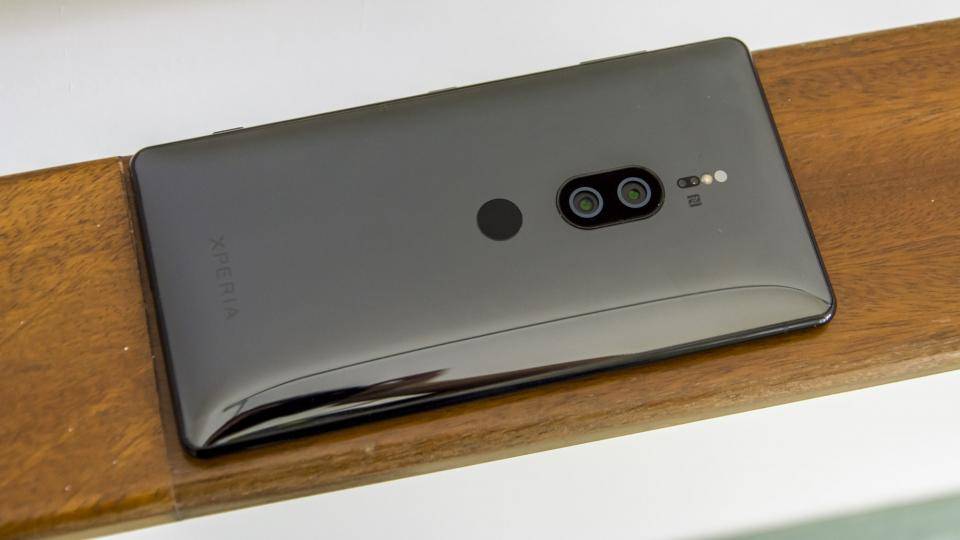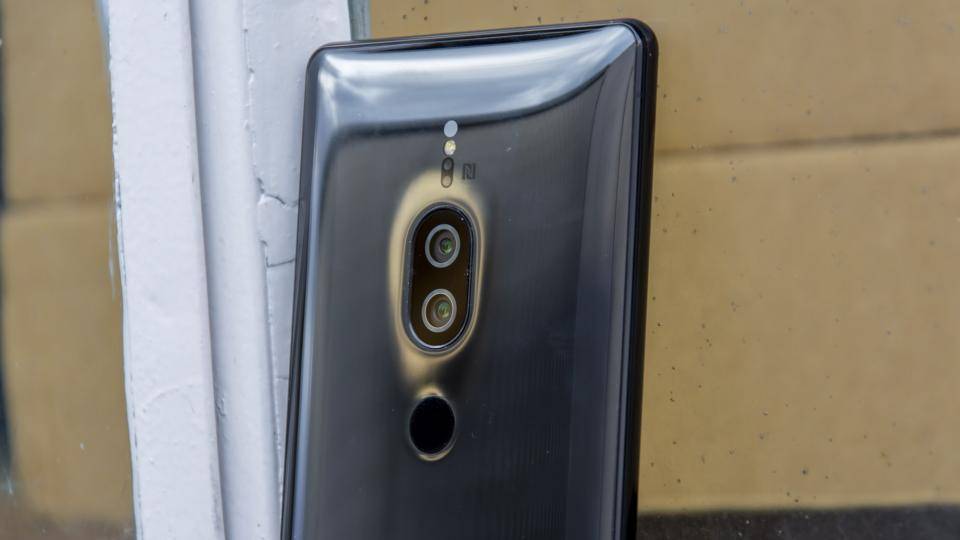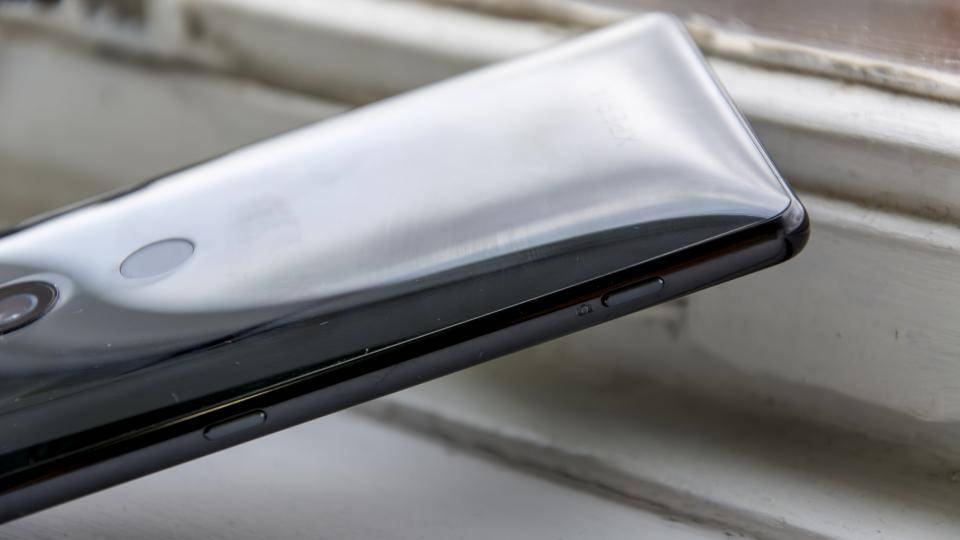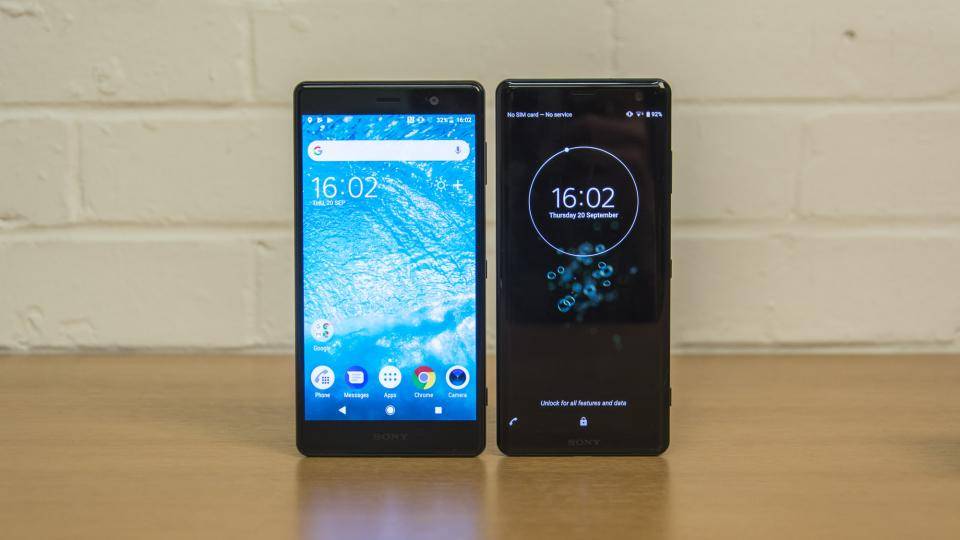Sony Xperia XZ2 Premium review: A plus-sized disappointment
As a general rule, an expensive smartphone ought to be better than a slightly cheaper smartphone produced by the same manufacturer. With the Xperia XZ2 Premium, Sony has tossed away the rulebook completely, because its £800 flagship is in many ways inferior to the soon-to-be-released Sony Xperia XZ3 .
The XZ2 Premium and XZ3 are both powered by the same Qualcomm Snapdragon 845 processor, but the XZ3, which is £100 cheaper, comes out the victor in most of our tests. As its name suggests, the Xperia XZ2 Premium does possess certain high-end features like a 4K HDR display and HDR video recording, but are they really worth the extra money?
Sony Xperia XZ2 Premium review: What you need to know
Sony’s new pride and joy, the Xperia XZ2 Premium, is a behemoth of a handset with a 5.8in 3,840 x 2,160p IPS display that supports HDR video playback.
From the photos, you can see that it’s a bulky handset. What you don’t get is how heavy it is. The corners may not be as sharp as its pocket-tearing predecessor, the Sony Xperia XZ Premium , but at 236g it’s still a lethal weapon.
Powered by a Qualcomm Snapdragon 845 processor, the Xperia XZ2 Premium is also much faster than its predecessor. It runs Android 8.0 Oreo, albeit with the usual Sony additions and tweaks.
Sony Xperia XZ2 Premium review: Price and competition

Asking consumers to pay £800 is a bit of a stretch for a smartphone, no matter how ‘premium’ its features may be. Granted, it’s not as bad as the iPhone Xs Max , which starts at £1,099, but it’s a little disappointing that the price of its flagship has risen from £650 to £800 in a single generation.
And, in this high price bracket, there’s some serious competition. Take Huawei’s P20 Pro , a gorgeously designed handset with a phenomenal triple camera setup which launched at £800 and has now fallen to £669 – £130 less than the Xperia XZ2 Premium. For £40 more, you’d be able to pick up a Samsung Galaxy S9+ , which in our books is the best Android phone ever released. If you’re going to spend £800 on a phone, you may as well stretch to this one.
Alternatively, you could save yourself £100 by dropping down the Sony Xperia XZ3. It performs just as well, has better battery life and has a superior OLED display – plus it’s nowhere near as bulky.
Best Sony Xperia XZ3 contract and SIM-free deals:
Sony Xperia XZ2 Premium review: Design

The Sony Xperia XZ2 Premium is, to use a little zeitgeist terminology, an Absolute Unit. Its screen measures only 5.8in across the diagonal – not huge for a flagship phone – but it’s much taller than handsets with the same display size due to the large chin and forehead bezels. The dimensions of the XZ2 Premium are 158mm x 80mm x 12mm and it weighs 236g, but it’s a mystery what all that extra size and weight are for.
The Sony Xperia XZ3 has a bigger screen, the same processor, the same amount of storage, and a similar battery size, yet it weighs 40g less. Why is this phone so massive, Sony? What is it hiding? A note on the battery, actually: when charging, it gets worryingly warm, and quickly. On the plus side, it could substitute for a hot water bottle in the cold winter months ahead.

One thing I do like about the XZ2 Premium’s design is the microSD and SIM storage slot. Situated on the top edge of the phone, it has a subtle lip that allows you to pull it out using a fingernail – no SIM pin or paperclip required. Apart from the Chrome Black colour seen in my photos, the XZ2 Premium is also available in a more appealing sleek Chrome Silver finish.
I don’t, however, like the button layout. All the physical controls are lined up along the right-hand side of the phone with the volume control near the top, the power button in the middle, and shutter-release for the camera at the bottom. The volume controls should be lower down because when the phone’s in your palm your thumb can’t reach from the volume button to the power button unless you use your free hand to adjust the phone’s position.
On the back, there’s another problem, this time with the fingerprint reader. It’s located slap bang in the middle, below the stacked flash and cameras lenses. Doesn’t sound too bad, does it? Well, it’s too low, and as a result, I found I either had to hold the XZ2 Premium with my other hand while unlocking it or precariously slide my finger downwards to reach it. The latter action caused me to nearly drop the phone on numerous occasions. See the image below for a size comparison between the Xperia XZ2 Premium (the larger one, on the left) and the Xperia XZ3.

To cap it all, there’s no 3.5mm headphone jack, only a USB Type-C port, for which a 3.5mm adapter is included in the box. Perhaps even more surprising, Sony doesn’t bother to provide headphones in the box. For £800, I expected more, especially when rivals Huawei and Samsung make a point of including decent earbuds in the box. There’s no protective case either.
The speakers are good, though, and I was pleasantly surprised with both volume and clarity. The Dynamic Vibration setting that adds to the bass effect is still there from the XZ, too – just don’t place it near the edge of a table or it might just vibrate itself off the edge onto the floor.
Sony Xperia XZ2 Premium review: Display
The Sony XZ2 Premium’s 5.8in IPS display has an impressively high resolution of 3,840 x 2,160 (4K) and it supports HDR content. On a minuscule screen, mere inches away from your face, there isn’t much point in the extra resolution over, say, a QHD+ display or even a 1080p screen. While it does look amazing, especially in default settings, with Sony’s X-Reality video image enhancement enabled, it’s genuinely hard to tell the difference between 1440p and 2160p when watching HDR YouTube showcase footage.
I also compared HDR Netflix footage on the XZ2 Premium to the Dolby Vision Netflix playback on the iPhone Xs Max. Both looked incredible, but the XZ2 Premium struggled a touch in the darker scenes of Lost in Space due to its relatively low 1,464:1 contrast ratio, no match for the perfect contrast of the iPhone Xs Max’s OLED display. The black level was grey in comparison and the white surfaces didn’t stand out as much.
The display itself is suitably bright, though, with a maximum output of 505cd/m2, which means the display will be readable on all but the brightest sunny days.
Here’s where things get confusing because the Sony Xperia XZ2 Premium has three display modes. There’s the standard display setting, a middle ground called Professional, and an intensely vibrant mode labelled Super-Vivid.
I’d recommend sticking to standard; while it’s a tad oversaturated and colour accuracy isn’t amazing, it’s better than the others. Super-Vivid is absurdly colour inaccurate; with an average Delta E of 8.87 (the lower the better) pretty much every possible colour is misrepresented. Professional mode is the least over-saturated, but its average colour accuracy indicator (average Delta E) is still below 3.09 and it only has 89% sRGB coverage in this mode. Overall, the display is decent but not as good as the class leaders.
Sony Xperia XZ2 Premium review: Performance and battery life
Now we come to another slightly perplexing aspect of the XZ2 Premium: its benchmark performance scores. With Qualcomm’s ultra-speedy Snapdragon 845 on board, the XZ2 Premium CPU achieved a multi-core score of 8,477 in the Geekbench 4 CPU test.
As demonstrated in the chart above, that’s lower than the score achieved by the Xperia XZ3, (also packing a Snapdragon 845), and the Galaxy S9+, which is powered by one of Samsung’s own, latest generation, Exynos 9810 chips. Still, it’s close enough that you wouldn’t notice a difference in day-to-day use.
At least the XZ2 Premium managed to keep up a little better with the XZ3 and Galaxy 9+ in the graphics department. In the GFXBench Manhattan onscreen benchmark, it averaged 57fps, which is about as much as the 60Hz display can handle.
During the more demanding Car Chase test it achieved 37fps, pulling ahead of the Xperia XZ3’s score of 19fps in the same benchmark. That doesn’t make sense, though, because it’s a higher resolution screen. I then discovered that GFXBench (along with most apps) was capped at 1,080p. That’s right: the XZ2 Premium only operates at 4K resolution in video applications, and nowhere else, as was the case with the XZ Premium. I have contacted Sony about this issue, and am awaiting an explanation for the resolution cap – I will update this review if and when I hear back.
Another letdown of the Sony Xperia XZ2 Premium is its battery life. In our video playback rundown test, it lasted 10hrs 44mins before running out of juice. That’s only 40mins more than its predecessor, the XZ Premium. The Xperia XZ3 lasted for 2hrs and 20mins longer than the XZ2 Premium, while the Odysseus-esque Huawei P20 Pro and Samsung Galaxy S9+ both made it way past the 14-hour mark.
Sony Xperia XZ2 Premium review: Camera
There are two rear-facing cameras on the XZ2 Premium: a 19-megapixel primary with an aperture of f/1.8 and phase detect autofocus and a 12-megapixel secondary used for adding depth for fake bokeh portrait shots. The front-facing camera is also a fairly hefty 13 megapixels. The selfie camera has a wonderful ability to capture minute detail and colour subtlety. It made my mess of hair look good, so I can’t complain.
Sony’s Xperia XZ2 was the first phone to be able to record 4K HDR video, but it didn’t work all that well, so I was keen to try it out here to see if things had improved. And as a matter of fact, they have! You can now shoot 4K HDR video, and it looks incredible. Better yet, the camera stabiliser works. Be aware that you can only record at a maximum of 30fps when shooting HDR. If you want 60fps footage, you must drop down to Full HD recording.
The camera stability in 4K HDR is actually more impressive than the footage quality itself. At one point I started spinning around in circles as fast as I could, and upon playing the video back found that it was perfectly watchable. For guerilla filmmakers, the Sony Xperia XZ2 Premium could be the ideal choice. Like the last XZ Premium, it can also record snapshots in super slow-mo 960fps, Full HD.
Sony’s camera software is both highly customisable and intuitive, a combination I don’t see too often. Features like HDR, object tracking and ultra-high sensitivity can be toggled on or off in a second. Be aware, though, that the high-sensitivity mode, which is geared towards capturing better images in low-light, doesn’t work in conjunction with HDR.
For the quality tests, I compared the Xperia XZ2’s camera directly with the iPhone Xs Max, which has dual 12MP cameras. Immediately, I noticed something odd about the HDR setting on the Xperia XZ2 Premium. Instead of increasing the vibrancy of colours and brightening up low-lit areas as HDR should do, it seems to darken the entire scene.
Shooting photos of the London skyline on a sunny day, the HDR mode gave the clouds and sky more pop and saturation but simultaneously made building shadows darker, hiding detail rather than illuminating it as it’s supposed to. Overall, the standard, non-HDR photos came out looking noticeably better.
Compared side by side with the iPhone Xs Max’s HDR photos, it’s clear to see that Apple’s camera setup is superior. The XZ2 Premium HDR software can’t seem to effectively combine the multiple shots to produce a more colourful image with enhanced contrast. Standard, non-HDR photos weren’t as pretty as the iPhone Xs Max’s HDR either; the skyline shots from the iPhone had more vibrancy and complex colour layering, and the contrast between surface shades – in brickwork, for example – was more clearly defined.
The XZ 2 Premium’s camera fared a bit better in indoor low light conditions. The flash function disperses light evenly across surfaces but it images appear flatter than a non-flash equivalent. Again, the iPhone Xs Max proves to have the better camera for indoor use, picking out more detail, with less image noise.
Sony Xperia XZ2 Premium review: Software
There’s nothing unusual to speak of with the Xperia XZ2 Premium’s operating system or user interface. It runs on Android 8.0, although strangely Sony’s own website lists the operating system as ‘Google Android O²’. It comes with the standard pre-installed Google apps, plus the Sony PlayStation and Xperia Lounge advertisement applications which, thankfully, can be uninstalled.
The Xperia Assist and Xperia Actions apps applications are actually pretty helpful, walking you through the phone’s features and helping you to customise your phone’s behaviour at different times of day, in different locations and when you travel abroad.
Sony Xperia XZ2 Premium review: Verdict
What the Sony Xperia XZ2 does well, it does so spectacularly. Watching TV and films on that 4K HDR display is a wonderful experience, and its HDR video capture and super-slow-mo recording capabilities set it apart. But these premium features are the best it has to offer; everything else about the phone is either average or sub-par.
Take the oversized, unattractive design, for example. Its thick, bulbous body has no finesse compared to, say, the Samsung Galaxy S9+ or the latest Apple iPhones. Fingerprint reader and button placement are off, and it’s about 50g heavier than it should be, too.
And when it comes to battery life, this phone doesn’t hit the mark, either. In short, the Sony XZ2 Premium is an oversized disappointment – it wouldn’t even be the best phone at £700, let alone £800.
|
Hardware |
|
Processor |
Octa-core 2.7GHz Qualcomm Snapdragon 845 |
|
RAM |
6GB |
|
Screen size |
5.8in |
|
Screen resolution |
3,840 x 2,160 |
|
Screen type |
IPS |
|
Front camera |
13-megapixel |
|
Rear camera |
19-megapixel, 12-megapixel |
|
Flash |
LED |
|
GPS |
Yes |
|
Compass |
Yes |
|
Storage (free) |
64GB |
|
Memory card slot (supplied) |
microSD |
|
Wi-Fi |
802.11ac |
|
Bluetooth |
5.0 |
|
NFC |
Yes |
|
Wireless data |
4G |
|
Dimensions |
158 x 80 x 12 mm |
|
Weight |
236g |
|
Features |
|
Operating system |
Android 8.0 |
|
Battery size |
3,540mAh |
